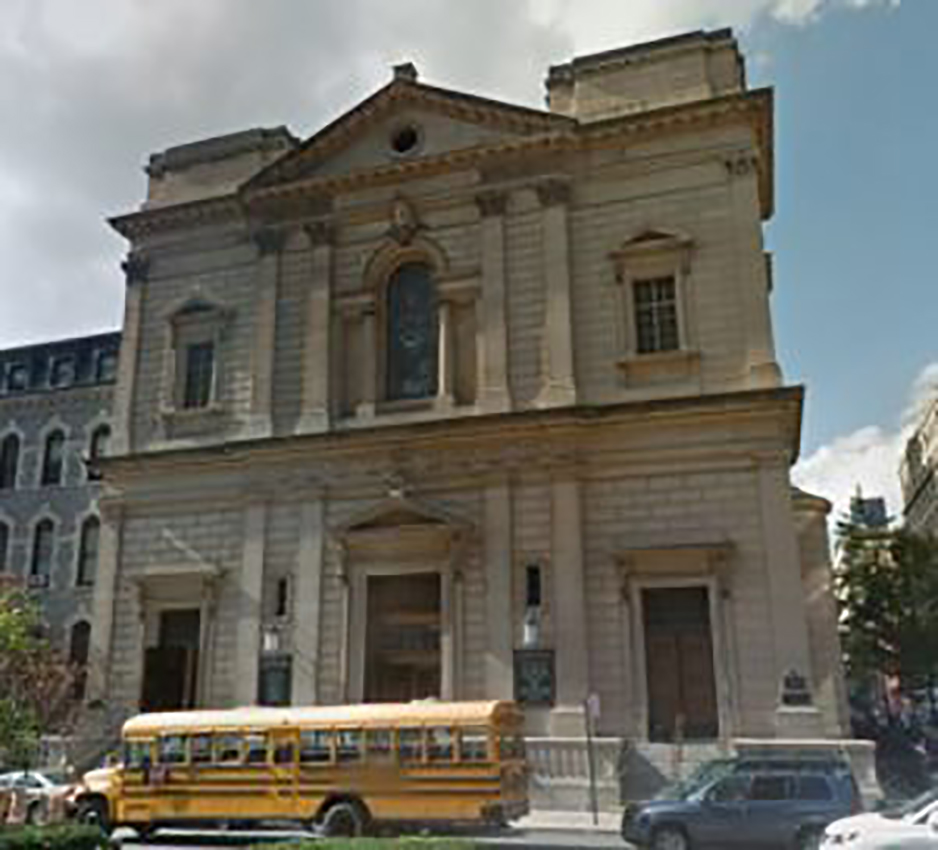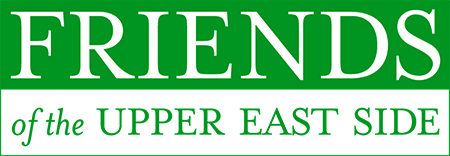Building Name
Saint Ignatius Loyola Church and Rectory
Architect
Schickel & Ditmars
Year(s) Built
1895-1900
Designation
Individual Landmark, Park Avenue Historic District

Project Information:
A Renaissance Revival church building designed by Schickel & Ditmars and built in 1895-1900. Application is to remove and modify stained glass windows, and install an elevator enclosure, a barrier-free access ramp, and signage.
CB8 Hearing: 12/11/17 (Accessible Ramp and Elevator: Approved; LED Church Lighting: Disapproved)
LPC Hearing: 04/17/18 (Approved with modifications)
FRIENDS' Testimony:
The Church of St. Ignatius Loyola, having risen on the site of the St. Lawrence O’Toole parish, holds enormous significance as a representative of the early history of Irish immigrants who lived on the Upper East Side and played a key role in its development. The north façade on East 84th Street has a balanced and elegant design with symmetrical Classical features. Such a well-proportioned façade is susceptible to significant impact from additions and subtractions.
Yet FRIENDS’ Preservation Committee believes the proposed elevator extension to St. Ignatius Loyola’s entrance on the north façade, facilitating greater accessibility both to the church and lower-level undercroft, to be a deft solution. The new vestibule’s design is well-balanced and aesthetically consistent with the church’s significant 84th Street façade.
This proposal takes care to use the same vocabulary of dressed ashlar limestone masonry, arched fan lights, and replicated profiles of moldings and surrounds, but still subtly differentiates the addition from the original historic fabric. We appreciate the subtle change of the masonry course, the two-part roofline, and the use of dressed masonry beneath ground level to set it apart from the archaeologically significant rusticated masonry foundation of a planned, but never constructed Gothic church building. This proposal arose from unique accessibility issues created by a grand 19th century structure, and FRIENDS supports the redesigned accessible entrance that will gracefully rectify those challenges.
However, in regards to the proposed LED signage, we are concerned about the ongoing impact of these screens on the appearance of this individual landmark. We applaud the applicant for proposing a new display solution that would retain the existing bronze enclosures, but allowing the installation of two large LED screens opens the door for an infinite number of display possibilities at this highly visible Park Avenue site. While these displays have been proposed precisely for their graphic versatility, the Preservation Committee worries that it would be too easy for graphics to jeopardize the restrained elegance and unity of the rest of the building. On this portion of the proposal, we urge the Commission to encourage a more appropriate solution.

